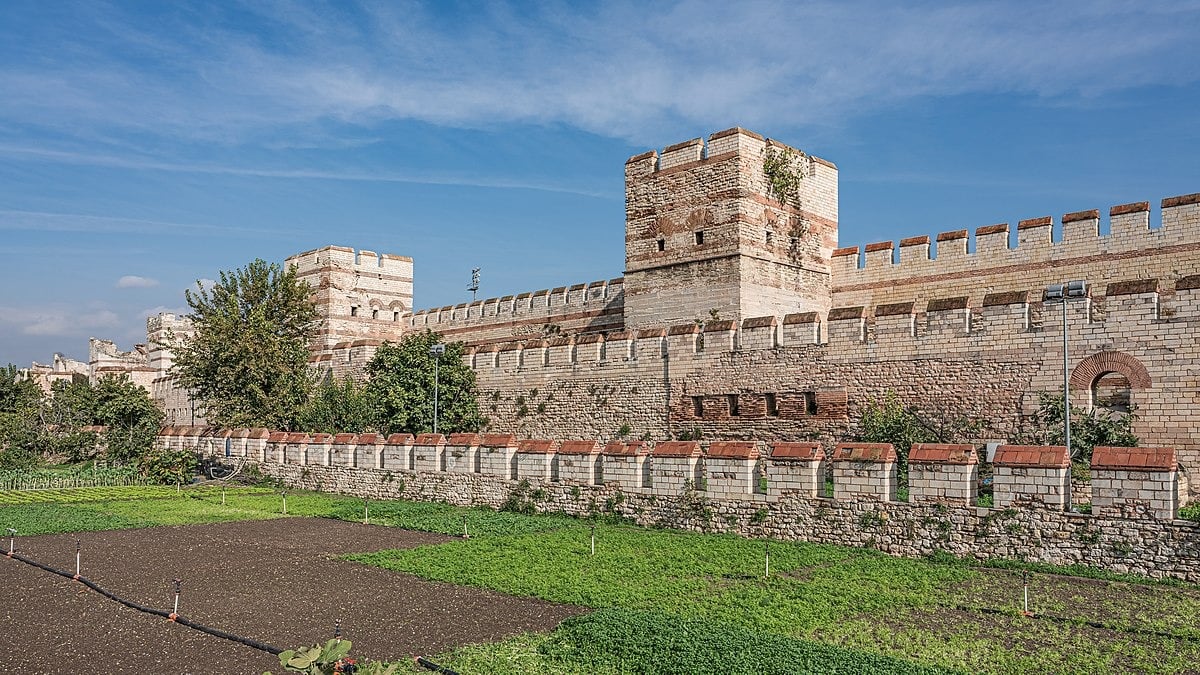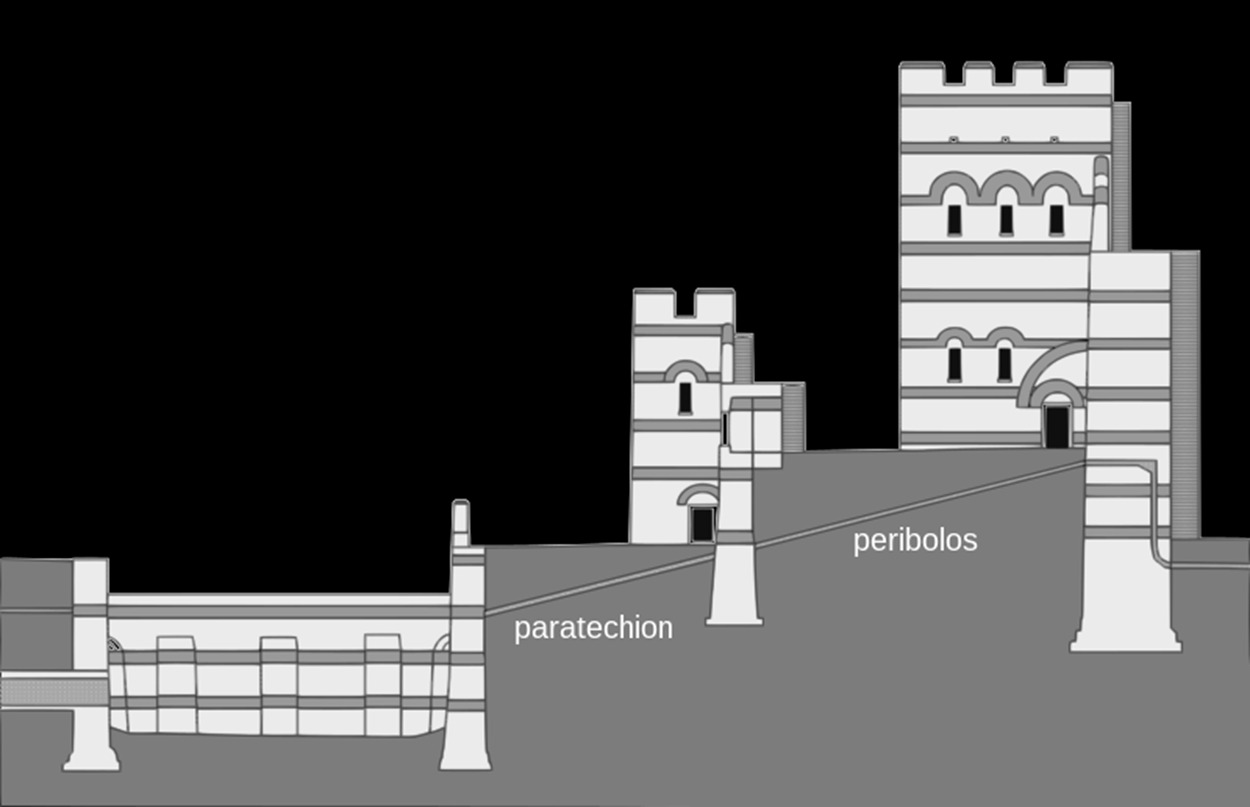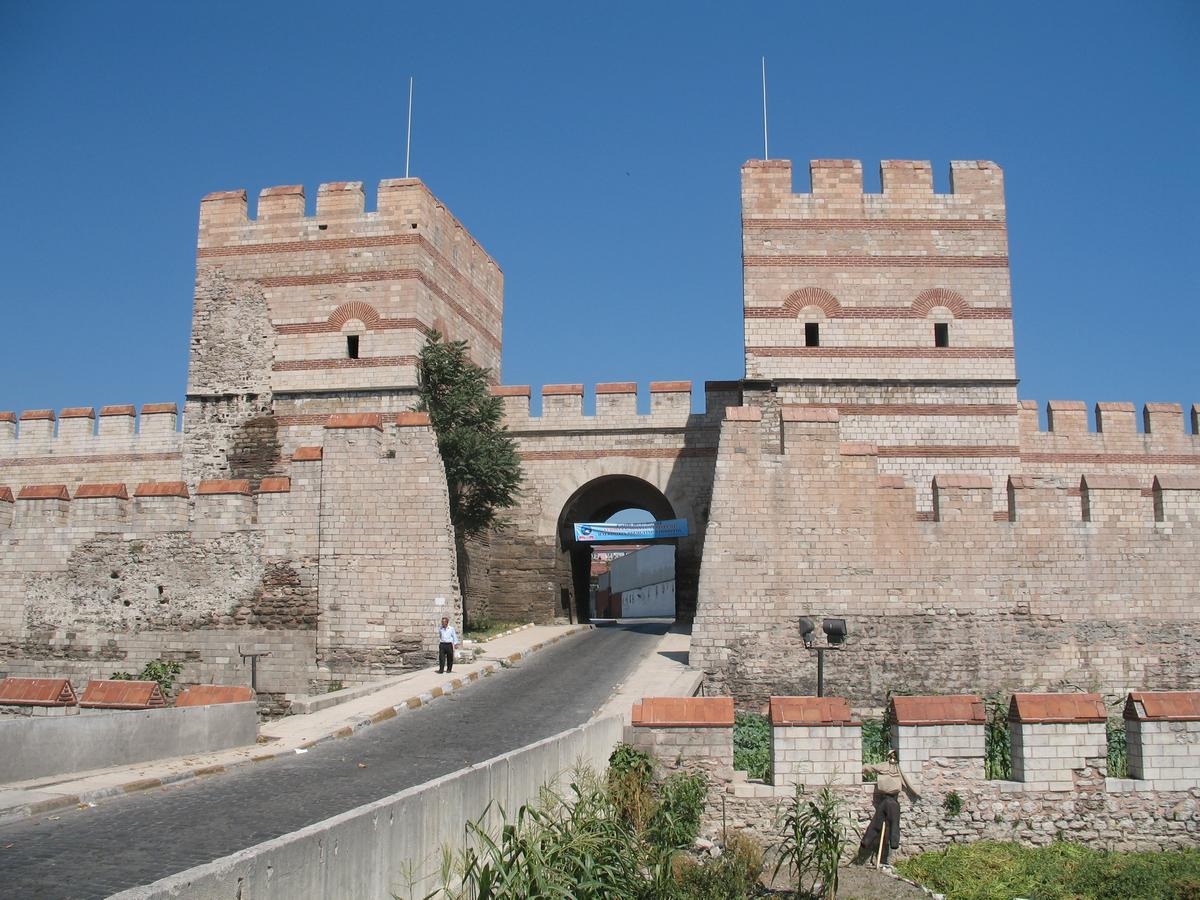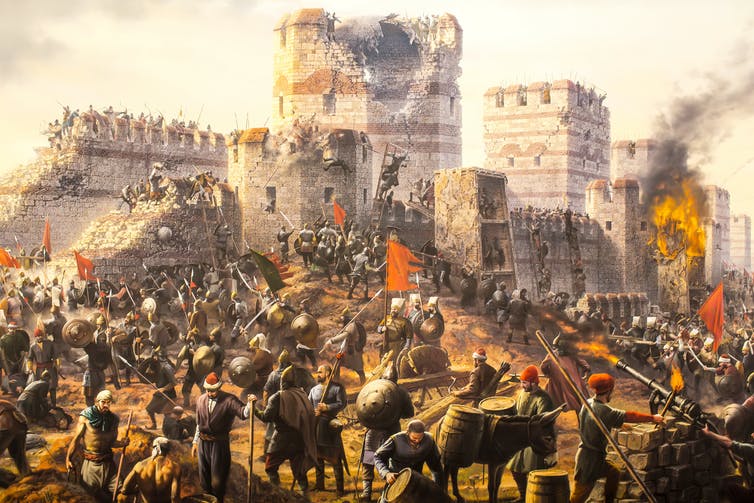
As the wealthy capital of the Eastern Roman (Byzantine) Empire, Constantinople was a tempting target for many rulers during late antiquity and the Medieval period. For this reason, it was essential to encircle the city with a ring of defensive walls and fortifications to deter and repel any attackers.
The ancient Greek colony of Byzantium was protected by walls, likely constructed during the city’s founding in c. 658 BC. When Emperor Constantine renamed the city Constantinople and made it the Roman capital, he upgraded its defenses. However, it was under Emperor Theodosius II that the most impressive fortifications were constructed – the eponymous Theodosian Walls.
The Theodosian Walls protected Constantinople for just over ten centuries until the city fell to the Ottomans in 1453. Yet, the wall survived both the Byzantine and Ottoman empires, with sections of it still visible in the modern city of Istanbul today.

Construction of the Theodosian Walls
The Theodosian Walls were constructed in two distinct phases during the reign of Theodosius II (408–450 AD) The initial phase of construction, which began around 408 AD and was overseen by the Praetorian Prefect Anthemius, was undertaken on behalf of the young Theodosius II. This phase, completed approximately by 413 AD, involved the creation of a single wall and a series of strategically positioned towers.
There is some reason to believe that the concept for these walls might have been initiated by Theodosius I, as suggested by the completion of the Porta Aurea (Golden Gate) in 391 AD. This first phase extended over a distance of roughly 6.5 kilometers, stretching from the Golden Horn to the Propontis (Sea of Marmara), and stood about 1.5 kilometers to the west of the pre-existing Walls of Constantine.
In 439 AD, Prefect Cyrus Panopolites undertook further construction or extension work on the walls along the Marmara and Golden Horn. However, the structural integrity of these walls was severely compromised by powerful earthquakes in 437 and 447 AD. The subsequent damage necessitated swift repairs, directed by the Praetorian Prefect Constantine.

The urgency was heightened by the threat posed by the Huns, who were actively occupying the Balkans and posed a direct danger to the Byzantine capital. Remarkably, with the active participation of the city’s population, the necessary repairs were completed within a mere two months. This impressive accomplishment is commemorated through inscriptions in both Latin and Greek at the Rhegium Gate.
The restoration efforts undertaken after the earthquakes were not limited to simple repairs; they involved an extensive process of enlargement and reinforcement. An outer wall was added, along with a protective moat. This comprehensive expansion resulted in Constantinople boasting an intricate and sophisticated urban fortification system, arguably the most complex of its kind in the ancient and Medieval world.
Despite their formidable nature, the Theodosian Walls did have vulnerable points. The outer wall appears to terminate just north of the Charisios Gate, and the moat similarly ends just south of this gate. The most exposed section of the walls, known as the Mesoteichion, centered around the valley of the Lykos River. Additionally, the walls constructed later around the Blachernai area also represented a weak link in the overall land defense system.

Impenetrable defenses
As the Byzantine Empire experienced several cycles of decline and revival, the Theodosian walls proved their worth on a number of occasions against a variety of foes determined to break through the defenses and claim the prize that was Constantinople.
One of the earliest and most critical sieges occurred in 626 AD when the city faced simultaneous assaults by both the Sassanid Persians and Avars. These determined foes sought to breach the walls and conquer the heart of the Eastern Roman Empire. Yet, the Theodosian Walls stood firm, thwarting their advances and protecting the city from invasion. The enemy’s progress by land was halted by the sheer strength of the fortifications, while the imperial navy, often referred to as the “wooden walls,” emerged victorious in naval battles, dismantling hostile fleets and preventing a combined assault.
In 674 AD and again in 717-718 AD, Constantinople faced the onslaught of Arab forces, determined to conquer the city and expand their dominion. Yet again, the walls’ defensive capabilities, coupled with the prowess of the imperial navy, played a crucial role in thwarting these sieges and preserving the city’s integrity.

Even during the chaotic period of the Fourth Crusade, when Constantinople was sacked and captured by Crusaders in 1204, the Theodosian Walls remained insurmountable. While the invading armies managed to breach the coastal defenses and gain entry to the city, the walls held strong, withstanding the assault and further cementing their reputation as an impregnable barrier.
It is worth noting that the defense of Constantinople was not solely reliant on the walls themselves; the coordinated efforts of both land-based defenses and the naval forces were integral to the city’s success in repelling invaders. The Theodosian Walls served as a last line of defense, complemented by the maritime strength of the imperial navy and the skill at arms of the Byzantine soldiers who manned the walls.
The Fall of Constantinople
During the 15th century, the evolution of military technology finally posed a threat to the Theodosian Walls that could not be overcome. Constantinople’s fortifications had been capable of repelling all manner of Medieval siege weapons, but the introduction of cannons proved fatal for the walls and the defenders of the city who stood bravely atop them.
During the Siege of Constantinople in 1453 by Mehmed II, the Ottomans had to dispatch workers to upgrade the bridges and roads on the way to the city so that they could support the large cannons that would be needed to break the walls. This effort included fifty carpenters and two hundred artisans who reinforced roads as needed.
The Ottomans had a decisive numerical advantage during the siege, with about one hundred thousand to one hundred and thirty thousand troops on land supported by a fleet. In contrast, the Byzantines only had between seven thousand and ten thousand troops.

The Ottomans had about seventy cannons at their disposal, among them an exceptionally large artillery piece designed by a Hungarian engineer. Nevertheless, the walls initially held out and the defenders were able to repair them during the downtime between artillery barrages.
When the final assault took place on May 29, the Ottomans had already fired five thousand shots from their cannons using fifty-five pounds of gunpowder. The defenders were able to hold out for a time until they were overwhelmed by the sheer number of enemies. Thus fell Constantinople and the Byzantine Empire.
See all the latest news from Greece and the world at Greekreporter.com. Contact our newsroom to report an update or send your story, photos and videos. Follow GR on Google News and subscribe here to our daily email!



